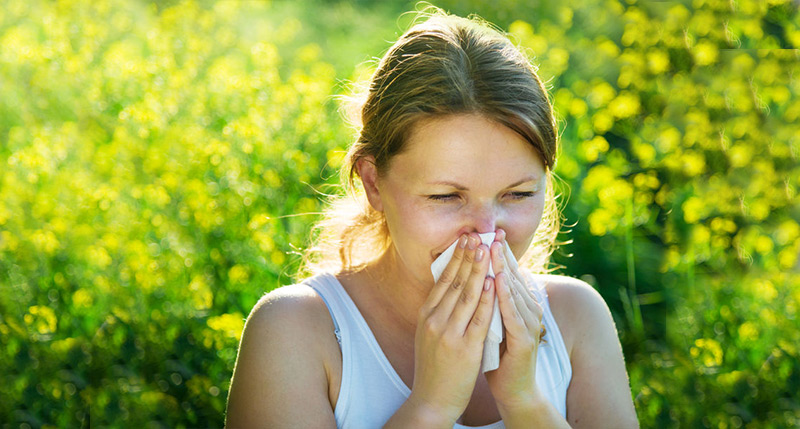Sniffling, sneezing, itching and wheezing your way through Spring? As you’ve likely noticed, you’re not alone. According to the Asthma and Allergy Foundation of America, about 50 million U.S. residents suffer from seasonal allergies. We wait all winter for the warmth of Spring, often forgetting the misery brought by the season’s biggest allergy trigger: pollen.
Trees, flowers, grasses and weeds all release tiny grains of pollen into the air to fertilize other plants. When pollen settles in the nose of an allergy sufferer, the body’s defenses ramp up. Your body perceives pollen as a danger and releases its forces in the form of antibodies to attack the allergens. Histamines are released into the blood, triggering the itchy, watery eyes and running nose we’re all too familiar with.
There are numerous over-the-counter medications to relieve the symptoms and misery of seasonal allergies, but for those who prefer not to medicate or need extra help in addition to the meds, what are some other options to limit the suffering of seasonal allergies? Consider these ideas:
- Stay indoors when pollen counts soar. Pollen peaks in the morning, and can be vicious on windy days. Try to stay inside on high pollen count days, and be sure to keep your doors and windows closed during the spring months to keep allergens at bay.
- Wash that pollen away! At the end of the day before going to bed, take a quick shower to rinse the pollen away. By nature, pollen is sticky and clings to hair, skin and clothing. Ensuring that you’re pollen-free when you get into bed can help you breathe easier all night.
- Nasal irrigation. Yes, that’s right: rinse out your nose, too! Using a Neti pot or saline nasal spray to remove any pollen from your nasal passages goes a long way toward minimizing allergic reactions.
- Change air filters more often in the Spring. More frequent vacuuming and dusting bookshelves, windowsills and other surfaces where pollen collects can help thwart allergens. Wear a mask if you’re highly allergic, because pollen will be swirling in the air as you clean. An air purifier can be your best friend during allergy season.
- Dry your clothes indoors. It’s great for the environment to line-dry your clothes, but if you dry them outside during pollen season, you’re inviting allergens into your home. Set up a temporary indoor clothesline until pollen season ends.
- Wipe down your pets. When Rover or Felix come inside after a day outside, they’re carrying pollen. Treating them to a quick wipe-down with a moist cloth or towel can go a long way toward minimizing the pollen count inside.
- Careful what you eat. Certain foods, including dairy, wheat, soy and sugary foods, can exacerbate hay fever symptoms. Eating fresh organic vegetables, hot and spicy foods, bone broths, pineapple and lean meats support your immune system. And don’t forget the apple cider vinegar! (see our recent blog post about the benefits of apple cider vinegar).
- Got mucus? Eating hot and spicy foods can help tip the battle against excessive mucus in your favor. Hot and spicy foods help to thin the mucus so you can more easily expel it. Cayenne pepper, garlic, onion, ginger, horseradish and cinnamon are all delicious options!
- Eat local honey. Let’s end on a sweet note: studies show that a couple of tablespoons of local honey consumed daily in the months leading up to allergy season can offer as much or more allergy symptom control as conventional allergy medications. This works because local honey contains the pollens causing your allergies; by exposing yourself to small amounts over time, your body becomes accustomed to what it once considered a threat.

